Community development projects
The NGO has so many projects to help the villagers to create incomes. These projects are for me totally new and I discovered how works the solidarity in the villages. To share, to divide, to organize for the collectivity. All these worlds were for me the basement of a good way of thinking and living, but here they have a rest of terrible memories : the recent communist dictature. This past has probably consequences on the organization of the farmers. They are still really respectfull of the rules and the collective action in order to developp the community and to stay workers on the field.
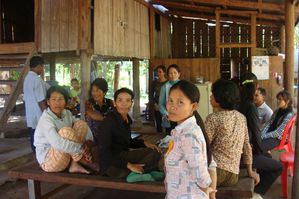
Vicheka helped me to translate in khmer all my questions:
-What did you do before being a farmer ? A majority of the women were daughters of farmers so they became farmers also without have been to school. One women answered that she arrived from the capital but has been married here with a farmer so she helps him. She was an accountant in Phon Pehn.
-Which life do you prefer ? City or countryside ? They all prefer living in the coutryside...even the only one from Phom Pehn. I always think about the book I read about the dictature and the obligation for everybody to return to the farm life. But this time, it was not Polpot who sent her to the field but her husband.
-How do you decide who will be the members and do you have enough volunteers to become secratary, seller or leader ? I asked this last question because in France, it’s so difficult to find some volunteers in local associations. They answered that they elect the responsibles one time per year and they never had problem to find some candidates. They seem to be so interesst by the development of their villages.
-During the harvest, do you organize a kind of exchange of employes to help the other farmers ? The problem was never asked because they already help each other during the harvest without a formal organization.
-Which project of SC do you prefer, which one helps you the most ? The objective of the NGO is to help some families to become self-suficiant by giving them access to a clean water, education for the kids and incomes. They answered me that the projects who create incomes is the first they need but all the others need to exist. Water and education access is important to complete the community development projects. They are all nested together.

Example of wonderful projects:
Animal Pass-On, directly influenced by the amercian Heifer program but adapted to the cambodian way of farming is one of my favorite action. The idea is to provide one animal (a cow for example) to one family. This family takes engagement that they will not kill or sell the cow until she doesn’t give birth. Then, when they get the first little cow, they have to give it to an other family member of the project. After this, they are allowed to do what they want with : to keep it for the milk, to have more cows or to sell it for a wedding for example. This is just clever, cheap and with a long term impact on the community.
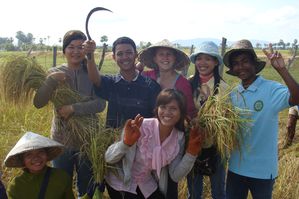
Bio-Gaz System: “The candles were dangerous for the houses built in wood, the fire dangerous for its smoke for the children, the fuel lamp and the battery non ecological and too expensive”, told me the owner of the house I visited. The NGO found a new way to make electricity. The user recolts every day the cow dung and put it on a well which collects the gaz made from it into a piping system which creates electricity for cooking and main lights in the house. Cheap, easy and ecological !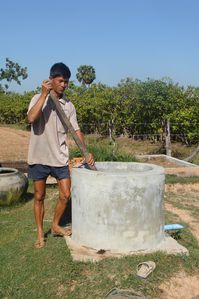
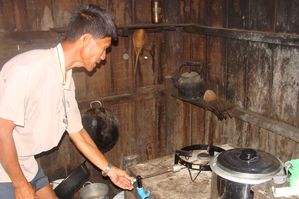
Vegetables garden and agriculture training center
The NGO’s staff teach how to developp a garden and to take care of fruit trees or grains given to the villagers. “Because a lot of farmers don’t know how tu use the naturel fertilizers, they buy some chemicals ones and make some mistakes”. The villagers who need can follow some courses at the Agriculture Training Center animated by SC. There are 2 hectares of land where they can practice. The courses are organised only when there is a need known thanks to the link with the community leader.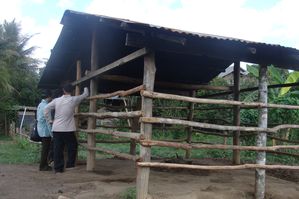
Micro-loan and Crop-loan
The first loan one is more for developping a micro-busisness and the second one is just for the purpose of growing a crop...they give back the money thanks to the sold of their business or garden. If a villager wants to make a loan, he needs to be a part of the seller-group =>3/5 members who look after each others. If one can not pay, the group has to find a solution (to pay for him). This seller group works under the management community. The interest is 2% but they can discuss about.
